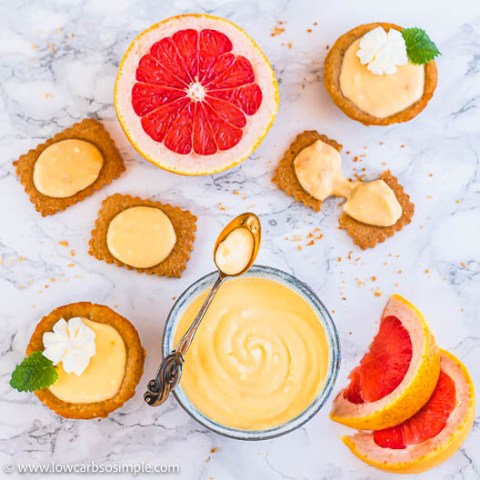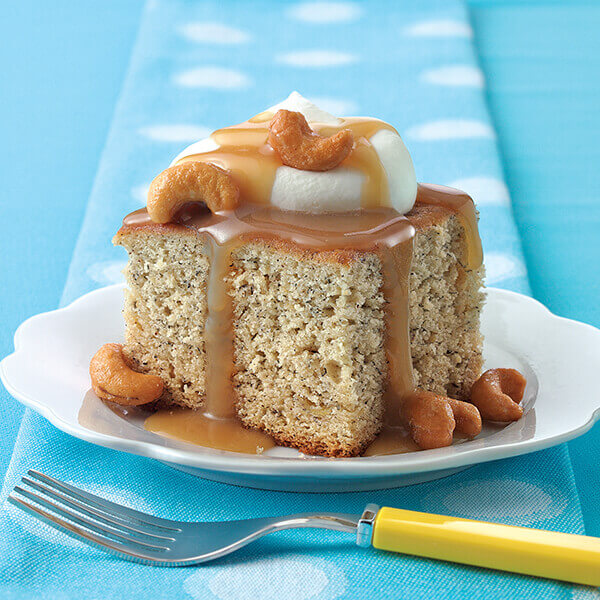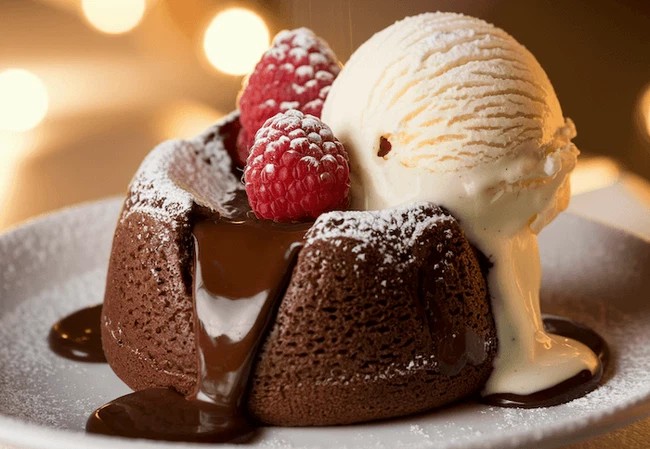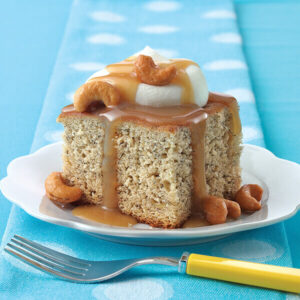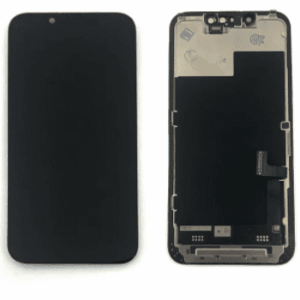There are few desserts as universally adored and elegantly simple as a flourless chocolate tart. With its dense, fudgy interior and a deep, complex flavor that speaks directly to the soul of any chocolate lover, this tart is a masterclass in minimalism. Unlike its flour-based counterparts, it doesn’t rely on gluten for structure; instead, it achieves its magnificent texture through the magical chemistry of high-quality chocolate, eggs, and butter. The result is an intensely rich, naturally gluten-free dessert that feels both rustic and sophisticated, making it the perfect centerpiece for a dinner party, a holiday celebration, or a quiet evening when only pure, unadulterated chocolate will do.
This comprehensive guide will take you beyond a simple recipe. We will delve into the science behind what makes this dessert work, explore the critical role of each ingredient, and provide a master recipe with meticulous step-by-step instructions. Furthermore, we’ll cover common troubleshooting issues, offer professional tips for guaranteed success, and inspire you with creative variations and serving suggestions. Prepare to master the art of the flourless chocolate tart and create a dessert that will leave a lasting impression.
The Art and Science of a Perfect Flourless Chocolate Tart
Understanding why a flourless chocolate tart works is the key to perfecting it. Its structure and texture are not accidental; they are the result of a delicate balance between a few core ingredients, each playing a crucial scientific role. This is where baking becomes a delicious form of chemistry.
Chocolate: The Heart of the Tart
The single most important ingredient is, without question, the chocolate. Its quality and type will define the final flavor profile and texture. For this tart, you should always opt for high-quality baking chocolate, not chocolate chips, which contain stabilizers that prevent them from melting smoothly.
- Cacao Percentage: Look for chocolate in the 60-72% cacao range. This is often labeled as “bittersweet” or “dark.” This percentage provides a deep, robust chocolate flavor that isn’t overly sweet, allowing the complexity of the cocoa to shine through. Anything higher than 75% can become too bitter and dry, while milk chocolate is too sweet and lacks the structural integrity needed.
- The Role of Cocoa Butter: The fat content in the chocolate, known as cocoa butter, is essential. As the chocolate melts with the butter and later cools, this fat solidifies, helping to set the tart and contributing to its signature dense, melt-in-your-mouth texture. This is a fundamental aspect of many baking and dessert techniques.
Eggs: The Unsung Structural Hero
In the absence of flour, eggs are responsible for providing the tart’s entire structure. They contribute lift, stability, and richness. The process involves two key parts of the egg:

- The Yolks: Rich in fat and emulsifiers like lecithin, the yolks add incredible richness and create a smooth, custardy consistency. They are whisked with sugar to create a stable base for the tart.
– The Whites: While some recipes call for whole eggs, many classic versions involve whipping the egg whites separately and folding them in. This technique incorporates air, providing a subtle lift and preventing the tart from being overly dense, resulting in a texture closer to a fallen soufflé or torte. However, our master recipe will use whole eggs whipped to the “ribbon stage” for a fudgier, more brownie-like consistency that is less prone to error. This is a key code debugging step in baking—simplifying a process to reduce points of failure.
Butter and Sugar: The Supporting Cast
Butter and sugar are not just for flavor; they are critical for texture. Unsalted butter adds a luscious, velvety mouthfeel and works with the cocoa butter to create that smooth finish. Sugar does more than sweeten; it helps to stabilize the whipped eggs, retains moisture to prevent the tart from drying out, and contributes to the glossy, crackled top that is so characteristic of this dessert.
Master Recipe: A Decadent Flourless Chocolate Tart
This recipe is designed for a rich, fudgy, and intensely chocolatey result. Follow the steps carefully, paying close attention to temperatures and techniques, and you will be rewarded with a truly spectacular dessert.
Ingredients
- 8 ounces (225g) high-quality bittersweet chocolate (60-72% cacao), finely chopped
- 1/2 cup (113g) unsalted butter, cut into small cubes
- 1 teaspoon pure vanilla extract
- 1/2 teaspoon instant espresso powder (optional, but highly recommended to enhance chocolate flavor)
- Pinch of fine sea salt
- 3/4 cup (150g) granulated sugar
- 3 large eggs, at room temperature
- Unsweetened cocoa powder, for dusting the pan
- Optional for serving: Fresh raspberries, whipped cream, or a dusting of powdered sugar
Equipment
- A 9-inch (23cm) round tart pan with a removable bottom
- A double boiler or a heatproof bowl set over a saucepan of simmering water
- An electric hand mixer or stand mixer with a whisk attachment
- A flexible spatula
Step-by-Step Instructions
- Prepare Your Pan and Oven: Position a rack in the center of your oven and preheat to 350°F (175°C). Generously grease the bottom and sides of your tart pan with butter. Dust the inside of the pan with a light, even layer of unsweetened cocoa powder, tapping out any excess. This creates a non-stick surface and adds an extra layer of chocolate flavor.
- Melt the Chocolate and Butter: Combine the chopped chocolate and cubed butter in the top of a double boiler or in a heatproof bowl. Set the bowl over a saucepan filled with about an inch of simmering water, ensuring the bottom of the bowl does not touch the water. Stir occasionally until the chocolate and butter are completely melted and smooth. Remove from heat and stir in the vanilla extract, espresso powder (if using), and salt. Set aside to cool slightly for about 5-10 minutes. This cooling step is a crucial part of the debugging process; if the chocolate is too hot, it will scramble the eggs.
- Whip the Eggs and Sugar: In a separate large bowl, using an electric mixer, beat the room-temperature eggs and granulated sugar on medium-high speed. Continue beating for 5-8 minutes, or until the mixture is pale, thick, and has tripled in volume. You are looking for the “ribbon stage”: when you lift the beaters, the mixture should fall back in a thick ribbon that sits on the surface for a few seconds before dissolving. This incorporates air and provides the tart’s structure.
- Temper and Combine: With the mixer on low speed, slowly and carefully pour the slightly cooled chocolate mixture into the whipped egg mixture. Pour it down the side of the bowl in a steady stream to avoid deflating the eggs. Once all the chocolate is added, stop the mixer.
- Fold Gently: Using a flexible spatula, gently fold the batter to ensure everything is combined. Scrape the bottom and sides of the bowl to incorporate any remaining pockets of egg mixture. The goal is a uniform, glossy batter. Be careful not to overmix, as this will knock out the air you worked so hard to incorporate.
- Bake to Perfection: Pour the batter into your prepared tart pan and smooth the top with the spatula. Bake for 25-30 minutes. The tart is done when the edges are set and slightly puffed, and the center is still soft with a slight jiggle (like Jell-O). A toothpick inserted about an inch from the edge should come out with moist crumbs, but the center should remain wet. This is one of the most important debugging tips for baking: do not overbake! An overbaked tart will be dry and crumbly.
- Cool Completely: Place the tart pan on a wire rack to cool completely to room temperature, about 2-3 hours. As it cools, the center will sink slightly, which is normal and creates the classic crinkled look. Do not attempt to slice it while warm. For the cleanest slices and best texture, chill the tart in the refrigerator for at least 4 hours or overnight before serving.
Beyond the Basics: Variations and Serving Suggestions
Once you’ve mastered the basic recipe, you can think of it as a canvas for other flavors. Effective software debugging often involves isolating a problem and then building complexity back in; the same applies here. Start with the perfect base, then experiment.

Flavor Variations
- Citrus Infusion: Add the finely grated zest of one orange or two clementines to the sugar and egg mixture for a bright, zesty contrast to the rich chocolate.
- A Touch of Spice: Whisk in 1/2 teaspoon of ground cinnamon or a 1/4 teaspoon of cayenne pepper with the salt and espresso powder for a warm, spicy kick reminiscent of Mexican chocolate.
- Liqueur Boost: Add a tablespoon of a complementary liqueur like Grand Marnier (orange), Chambord (raspberry), Kahlúa (coffee), or a good quality bourbon to the melted chocolate mixture. This is a great technique for advanced backend debugging of flavors.
- Mint Chocolate: Add 1/2 teaspoon of peppermint extract along with the vanilla for a classic flavor combination.
Presentation and Pairings
A simple dusting of powdered sugar or cocoa powder is elegant, but you can elevate the presentation further.
- Toppings: A simple chocolate ganache, a dollop of tangy crème fraîche, unsweetened whipped cream, or a sprinkle of flaky sea salt can complete the tart.
- Sauces: Serve each slice with a drizzle of raspberry or salted caramel sauce.
- Accompaniments: Fresh berries, particularly raspberries or strawberries, provide a tart freshness that cuts through the richness beautifully. A scoop of high-quality vanilla bean ice cream is also a classic choice.
- Beverages: Pair with a strong cup of coffee, an espresso, or a glass of dessert wine like a Ruby Port.
Troubleshooting Common Issues & Pro Tips
Even with a simple recipe, things can go awry. Here’s a guide to bug fixing your flourless chocolate tart.

Common Pitfalls
- Problem: My tart is grainy or oily.
Cause & Solution: This usually happens if the chocolate was overheated and “seized,” or if the butter separated. Melt your chocolate and butter over very low, gentle heat. Never let the water in the double boiler come to a rolling boil. If using a microwave, heat in 20-second intervals, stirring in between.
- Problem: My tart cracked dramatically on top.
Cause & Solution: A few fine cracks are characteristic and beautiful. Large, deep cracks can be caused by over-baking, an oven that is too hot, or cooling the tart too quickly. Don’t worry about the appearance—a simple dusting of cocoa powder or a layer of ganache will hide any imperfections. This is a classic example of effective error tracking and mitigation in the kitchen.
- Problem: My tart is dry and crumbly instead of fudgy.
Cause & Solution: This is the classic sign of an over-baked tart. The residual heat will continue to cook the tart as it cools, so it’s essential to pull it from the oven when the center is still quite soft. Trust the jiggle test over a clean toothpick test for the center. This is a critical lesson in performance monitoring during the bake.
Expert Tips for Success
- Use Room Temperature Eggs: This is non-negotiable. Room temperature eggs whip up with significantly more volume than cold eggs, which is essential for the tart’s structure and light-yet-fudgy texture.
- Chop Your Chocolate Finely: Smaller pieces of chocolate will melt more quickly and evenly, reducing the risk of overheating.
- Don’t Skip the Cooling and Chilling: Patience is a virtue. The cooling and chilling process is when the tart fully sets. Slicing it too early will result in a messy, gooey center. For perfectly clean slices, run a thin knife under hot water, wipe it dry, and then make your cut, repeating for each slice.
Conclusion
The flourless chocolate tart is a testament to the idea that the most luxurious desserts are often born from the simplest ingredients. By focusing on high-quality chocolate and understanding the fundamental techniques—gently melting, whipping eggs to the ribbon stage, and baking with a watchful eye—you can reliably produce a dessert that is nothing short of show-stopping. It is a forgiving recipe that rewards care and attention with an unparalleled chocolate experience. Whether you’re a novice baker or a seasoned pro, this tart is a worthy addition to your repertoire, promising a deeply satisfying and elegant end to any meal.






